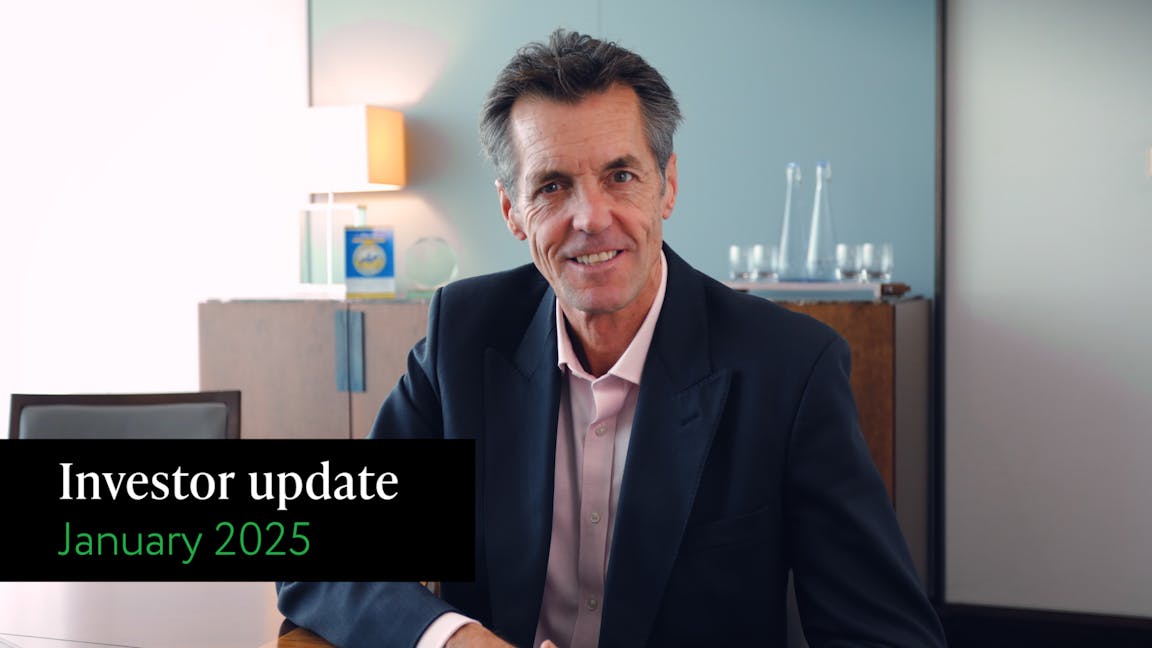
In December, there was a little cold water poured on investors’ optimism. However, 2024 was still particularly strong for most stock markets.
At a glance
- In December, the Fed poured a little cold water on investor optimism
- The 'Santa Claus' rally didn’t materialise for most stock markets
- Bond markets had a disappointing month, with rising yields pushing down prices
- Despite a weaker December, 2024 was a very strong year for most stock markets but a more mixed one for bonds
What happened in financial markets in December?
Well, for context let’s start off by saying that, for stock markets, 2024 was a particularly strong year for many regions, and we’ll delve into the detail of that in a moment.
But firstly, December. The optimism of November had a little cold water poured on it by the US Federal Reserve – more commonly known as the Fed. At their December meeting rates were cut by a further 0.25 percentage points, but it was more what was said than what was done that caused the year to finish on a slightly flat note. While rate cuts are typically welcomed by investors, the Fed now anticipates that rates will only be cut by 0.50 percentage points during 2025.
As a quick recap, central banks like the Fed – and the UK’s Bank of England – have been cutting rates to help boost economic growth. However, inflation in the US has remained stubbornly above target. The Fed is therefore concerned that if they cut rates too much too quickly, it could bring unwanted upward price pressures. This is a fine balancing act for Fed Chair Jerome Powell and his colleagues.
For stock markets, this meant that the famous 'Santa Claus rally' – where stock markets can be boosted in December by increased consumer spending and optimism – failed to materialise for most regions.
For bonds, the Fed’s messaging pushed yields higher, causing prices to dip slightly across most fixed income asset classes. That's the way bond markets work; when yields rise, their price falls.
What was the full picture for 2024?
For stock markets, 2024 was generally a very strong year. Regions such as the UK, Canada, India and Asia Pacific all finished the year ahead, despite falling in December. But none could quite match the same combination of economic stability and corporate earnings strength that has underpinned the US.
The S&P 500 index, which tracks the performance of the 500 largest US companies, saw a gain of 25% for the year. Historically, returns this high are fairly rare.
The NASDAQ index, which is a tech stock index, including high-flying companies such as Nvidia, saw an even stronger year, with prices up just under 26%. Tech stocks have continued to attract investors as artificial intelligence – or AI – starts to become increasingly mainstream. AI has continued to shift from being a technology with potential for the future, to one with real life productivity benefits on a day-to-day basis.
Although the main story has been about the strength of stock markets, many bond markets have also experienced a positive year. Higher risk ‘high yield’ bonds in both the US and Europe have increased 8.2% and 8.6%, respectively. They have benefitted from the relative economic stability we saw in 2024, something that was far from guaranteed at the start of last year.
It’s been a mixed picture for government bonds. In the UK, gilts have performed poorly. In Europe, Italy and Spain have performed well, helped by the expectation of further rate cuts amid a weaker economic picture relative to the US. US government bonds have seen more muted performance as expectations of further rate cuts were wound back. The re-think was due to better-than-expected economic results.
What is the Nutmeg investment team’s outlook for 2025?
We are optimistic about the investing landscape as we move into 2025, yet challenges remain.
Over the past two years, multi-asset portfolios have thrived, benefiting from strong equity performance. The global economic environment, especially in the US, remains supportive going forward. There is a robust job market, lower inflation and interest rates are on a downward trend. We expect the corporate earnings landscape, especially in the US, to remain positive.
However, a degree of caution is warranted. US equity valuations are above historic averages, and geopolitical uncertainties, such as potential instability from the Trump administration and ongoing global conflicts, could increase market volatility. Emerging markets face challenges, including potential Trump tariffs which could strengthen the dollar and impact these economies. China's economic transition and deflationary pressures add to the uncertainty.
In Europe, we believe the UK is better positioned than the continent, with growing household incomes and a recovering housing market. Interest rate policies are expected to ease, but the link between wages growth and inflation means that tight labour markets and rising wages could rekindle inflation. Central banks are likely to proceed cautiously with rate cuts.
Despite these risks, the investment team maintains a positive long-term outlook. We are, however, holding slightly higher cash reserves than usual, ready to adapt and capitalise on market opportunities that may arise if we see volatility increase in the short term.
About this update: This update was recorded on 7 January 2025. All figures, unless otherwise stated, relate to the month of December 2024. Source for figures: MacroBond, Nutmeg and Bloomberg.
Risk warning
As with all investing, your capital is at risk. The value of your portfolio with Nutmeg can go down as well as up and you may get back less than you invest. Past performance and forecasts are not reliable indicators of future performance. We do not provide investment advice in this article. Always do your own research.



